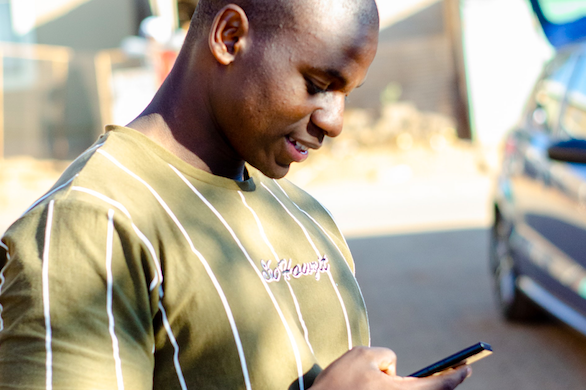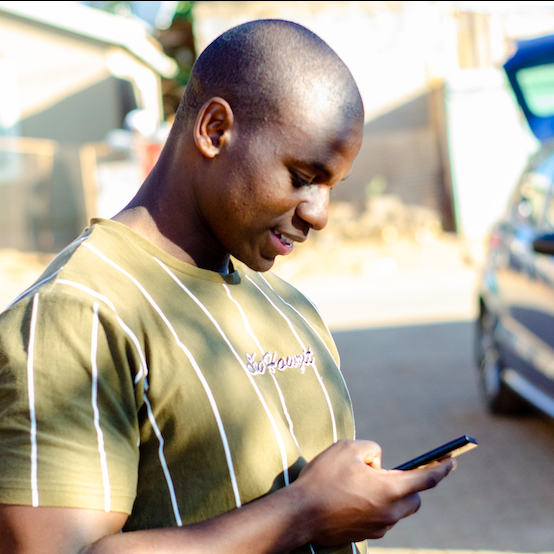Amadeus technology flies high for UNICEF


Panasonic lantern programme lights way in developing countries


Disney takes more transparent approach to reporting


Principles don’t pull against profit


All in a good day's work


IRI names new deputy


RobecoSAM kicks off CSA research


Climate Solutions: Biochar Goes Commercial But Struggles Without Impact Investment


Submitted by Guest Contributor
By Karen Ribeiro
Bio-what?
The word biochar, let alone the biological and chemical properties of it, is not widely understood. You know that biomass is, generally, plant wastes and you know charcoal is great for barbeque, but what on earth is "biochar"?
In simplest terms, it is specialized charcoal appropriate for use as a soil amendment where its physical structure -- millions of tiny pores per cubic inch -- allow it to greatly enhance soil health, conserve water, and hold carbon.
Thousands of years ago when the native people of the Amazon were devising optimal land use practices, as described in Charles Mann's bestseller 1491, they figured out how to return carbon, sequestered by plants and trees, back into the soil in order to sustain and increase its well being. This black earth carbon or "Terra Preta" is still there, accompanied by the resulting colonies of soil microbes. Industrial agricultural practices have strayed far from these roots, to be sure, but such practices are making a real comeback.
On both hyperlocal and large scales, the biochar industry is turning waste into “black gold” for agriculture – and the climate.
Spreading the Word on Biochar
One of the first experts a person journeying into the field of biochar will meet is Dr. Johannes Lehmann, a soil scientist at Cornell who has published many papers on the benefits of biochar as well as the textbook Biochar for Environmental Management Science and Technology. YouTube videos run the gamut from the easily digestible Biochar Bob series and various TEDx talks to the deep dive science of energy and agriculture with John Miedema along with thousands of small scale cook stove demonstrations of TLUDs (top lit up-draft units).
But without a sophisticated penchant for extra curricular study, Joe Q Public isn't learning about biochar and what it can do to restore denuded, compacted soils to absorbent, thriving ecosystems. Now, the United States Biochar Initiative (USBI) and the International Biochar Initiative (IBI) would like to change that. Both sponsor annual conferences and the next USBI North American Biochar Symposium will be at the University of Massachusetts-Amherst on October 13-16.
Further Research, Scaling Up Needed
As with any emerging industry, there are multiple complexities to be overcome.
The types of waste materials or feedstocks, used to produce biochar; the temperature at which the feedstock is heated or pyrolyzed; and the process of inoculating or preparing, the biochar before it is added back into the soil: these are all factors to be considered.
Standards have been developed by IBI, production kinks have been worked out, but many  longitudinal studies with different types and amounts of biochar are still needed to support the entrepreneurs producing and selling char.
longitudinal studies with different types and amounts of biochar are still needed to support the entrepreneurs producing and selling char.
Like with any technology, we need higher volumes of biochar to drive down its price per ton and thus get many more farmers to use it.
And we need a larger market to encourage investors to capitalize larger production capacity and help biochar play a larger role in agricultural and climate solutions. Studies and field trials like one conducted by the New England Small Farm Institute can encourage policymakers to draft new guidance and move the market forward.
Market development thinking goes something like this:
“if only we could divert a significant percentage of funds from the current flow of money invested in harmful things by large foundations, venture capitalists, big name celebrities, the department of defense? ... we could finally and properly support the countless budding entrepreneurs ready, willing and able to make a real difference in the systems of agriculture, energy, community, education, and even help restore Mother Earth herself.”
Certainly the hope we are harvesting within the biochar industry is no different.
A Simple Thing To Consider About Biochar
Biomass left to rot, whether dying trees in a forest, manure on a farm, or decomposing peat bogs, releases the greenhouse gases it had once held. Converting these wastes into a high value soil amendment that also sequesters carbon for hundreds or thousands of years, can, perhaps, ensure soil health and mitigate climate disaster.
Taking part in this national and global movement to restore the natural well being of elemental ecosystems across the earth -- where any and all viable, high-impact actions are explored -- restores one's hope in the future.
We need this action NOW because solutions are rooted in patience, longevity ... time. And we're in danger of losing all three.
About the Author:
Karen Ribeiro is the principle of Inner Fortune, an environmental consulting and coaching firm in Amherst, Mass., and has designed a variety of in-person and online programs and tools to stimulate intuitive clarity. Ribeiro is currently the conference director of the 2013 USBI North American Biochar Symposium, and has just started writing a new book melding an extensive genealogy exploration with the intriguing exploration of biochar's impact on root structures. For more, visit www.innerfortune.com.
Standard Bank and SAP Team Up to Expand Banking to Millions in South Africa


What do you get when you combine mobile banking and that pretty plastic blue Visa card? Accessible banking to millions of Africans, a game changer in consumer banking and an innovative approach to CSR in emerging markets. In South Africa, Standard Bank has revolutionized financial services with AccessBanking, a new way to save and spend money that runs on one of SAP’s new banking software platforms.
Standard Bank’s AccessBanking is a big step forward for personal finance in South Africa. Currently as much as 33 percent of the country’s population is does not have access to banks. Many South Africans who have a bank account but live in the townships that are located in the far outskirts of South Africa’s largest cities are as far as 25 to 40 miles away from the nearest branch. But with an ID card and a cell phone, Standard Bank can offer access to cash at thousands of sites in South Africa, provide jobs to the unemployed and help merchants expand their business.
So how does AccessBanking work?
Standard Bank’s employees and “AccessAgents” pitch promotional tents across South Africa or local corner stores (called “spaza shops” in South Africa) or malls in townships and smaller cities across the country. Signing for an account is easy: all a customer needs is identification and proof of residence. Then the AccessAgent fills out a brief form, sets up a transactional or savings account and demonstrates how to use the service. The process generally takes fewer than 10 minutes and has been done in as fast as two minutes. Customers are definitely excited over this service: during our visit yesterday to Tembisa, a township outside of Johannesburg, the queues to sign up at two locations to which we paid a visit were long.
But this is not mobile banking--the card does not go away. Upon signup, the customer receives a blue Standard Charter debit card with the famous credit card symbol plunked in a corner. According to Audrey Mothupi, Head of South Africa’s Inclusive Banking, South Africans aspire for a rectangular debit card similar to what the richer citizens in their country enjoy. Upon receiving the card, customers can walk into over 7,000 “AccessPoints” in South Africa and deposit or withdraw cash, check their balances, transfer money and buy prepaid electricity or mobile telephone airtime.
According to Standard Bank, about 90,000 new accounts open monthly, adding to the 3.5 million customers the bank migrated from older legacy accounts. In turn, these customers benefit from a seamless way to manage their money instead of hiding it in a mattress or making a long trip to the nearest bank branch. They benefit from a safe and secure banking system that allows them to deposit even the smallest amounts of money close to their home. Standard Bank only charges a fee if the customer uses an ATM or completes a transaction with one of the bank’s branches. At an AccessPoint, however, no transaction is too small: “That hairdresser who made a quick R200 (1 rand is about $0.10) can run into the store and deposit her money safely,” said Mothupi. And every single transaction is followed up with a quick SMS message.
Merchants also benefit from AccessBanking. Based on the level of activity they generate in their stores, a store owner can gain anywhere from an extra $200 to $800 in revenues monthly. They also become affiliated with a brand many South Africans once viewed as out of reach or in Mothupi’s words, “even foreign.” Plus, consumers who walk into one of these AccessPoints will likely walk out with a few products purchased at the same location.
The AccessAgents, upon completing a comprehensive training program, have what is hard to come by for many in South Africa and elsewhere in the region: a job. Currently 1,000 of these agents work across the country and Standard Bank plans on hiring more. Standard Bank not only pays agents for every account they set up, but for each new account that is actually activated. Such an extra step is important, Mothupi explained, because the extra effort helps convince customers to use this service often. And they do: over 2.3 million transactions worth R460 million (about $46 million) are completed monthly.
For Standard Bank, AccessBanking is about providing a much needed service and helping strengthen South Africa’s economy for everyone. “It’s about building new ecosystems,” Mothupi said, and similar revolutionary systems are underway. Spaza shop owners are now gaining access to a similar system, changing the way they stock their stores. They used to have to make an overnight trip to a warehouse store, which is both a huge waste of time and inefficient because it is difficult to gauge what kind of products, and how many, they can sell in the next several days. But now some merchants are testing a system where the same warehouse store can proactively message them and give them an estimate of how many various food and drink products they need--plus deliver them quickly.
If corporate social responsibility is about using a company’s expertise to better society, then Standard Bank and SAP’s partnership is one off to an exciting start.
Image credit: Steward Masweneng/Unsplash
Leading CSR at Hasbro With Some Help From Transformers & GI Joe


Submitted by Guest Contributor
The Civic 50, a groundbreaking initiative launched in 2012 by the National Conference on Citizenship, Points of Light and Bloomberg News, identified the top 50 community-minded S&P 500 corporations that best use their time, talent, and resources to improve the quality of life in the communities where they do business. The ranking is based on seven dimensions - community partnerships, measurement and strategy, leadership, design, employee and civic growth, cause alignment, and transparency.
In part five, Ilir Zherka, Executive Director of the National Conference on Citizenship, decodes the fifth dimension: leadership.
_________________________
Matthew McGowan, an eight-year old with cancer, had so much fun at Give Kids the World Village in Kissimmee, Fla., that his father, Rich, went straight back to the community relations department at Hasbro Inc. to urge them to support the nonprofit resort for kids with life-threatening illnesses. Rich is also a manager of inventory and accounting at Hasbro’s Pawtucket, R.I. headquarters.
Turns out the giant toymaker was already in discussions with the organization and had in development a special edition of its famous Candy Land board game for the families as part of the Village’s 20th anniversary.
“When the first of those games came off the assembly line six weeks later,” recalled Pam Landwirth, president of Give Kids the World, “we invited Matthew to be there so we could give him one.”
Rich McGowan said the boy was delighted. “He looked at the board and said, ‘That’s where the dinosaur squirted us, that’s where we got ice cream’ and so on. It just brought back so many good memories.”
“Nobody from Hasbro ever just watches,” Landwirth said. “They want to be involved. They think nothing of getting into a polar bear suit or a Christmas tree costume for the group’s Winter Wonderland parade and Santa gift-giving events. Hasbro also funds the event’s floats, presents and costumes. That tells you something about the culture of the organization,” she said.
Going in Deep
For valuing executives willing to moonlight as polar bears, Hasbro earned honors in leadership last year from The Civic 50, a ranking of America’s most community-minded companies.
The Civic 50, a partnership between National Conference on Citizenship and Points of Light, ranks corporations on seven dimensions of local involvement. The leadership dimension requires a firm to show how it involves its executives, board members and senior managers in its community engagement programs.
“Executive involvement is part of our DNA,” said Karen Davis, Hasbro’s vice president for community relations. “We go in deep – it’s not checkbook philanthropy.”
Leaders of the $4.3 billion corporation are evaluated not just for their success in promoting Monopoly, GI Joe, Transformers, Play-Doh and Hasbro’s countless other toys and games, but also for their hands-on neighborhood involvement, Davis said.
Country managers worldwide have philanthropic budgets they can allocate to local nonprofits, and Hasbro matches employee donations of time at child-centered community groups and hospitals with donations of up to $2,500 in cash.
“Most every management team member serves on a [nonprofit] board of directors,” she added. “We use our contacts and our company assets to help nonprofits whenever we can.”
Beyond Checkbook Philanthropy
In the case of Give Kids the World, Hasbro’s leadership offered the use of its classic brand IP like Candy Land and My Little Pony to create some truly magical experiences for the children and families staying with the non-profit, not to mention the thousands of toys and games donated each year. Hasbro employees have volunteered their talents to assist with the design of different elements, while others have dedicated time volunteering at the Village, including a group of 30 employees who did a mission trip there last winter. Hasbro’s CEO Brian A. Goldner also sits on Give Kids the World’s advisory board.
Hasbro now donates 10,000 free Candy Land games plus 20,000 toys each year to Give Kids the World Village. The resort has hosted 121,000 families of seriously ill children from all 50 states and 74 countries. Matthew’s Boundless Playground, which also doubles as a larger-than-life sized Candy Land board, was named after Matthew McGowan, who died shortly after his visit to the resort.
In 2009, Matthew’s Boundless Playground was added to the Give Kids the World Candy Land game, the same game Matthew himself originally saw come off the assembly line years before. Hasbro donates the game to every single family that stays at the Village.
From Toys for Toddlers to Youth Empowerment
Experiences like those at Give Kids the World are just some examples of how Hasbro works to help children in need. In 2010, the company’s leadership team approved the expansion of its philanthropic focus to include youth empowerment. This resulted in a multi-year grant made through the Hasbro Children’s Fund to launch generationOn, the youth service enterprise of Points of Light, designed to help empower millions of young people to make their mark on the world through volunteer service.
Nina Mahalingam, 8, got involved with generationOn after the tsunami in Japan. “I felt overwhelmed and sad,” she recalled. “We decided we would make paper cranes as a symbol of hope.”
Her “Wish Upon a Crane” idea brought in $18,000 in donations from 12 countries and nearly 10,000 cranes, which now make up an art installation in Japan’s Sendai train station. “I feel happy when I do things for others,” she said. “I don’t think that I’ll ever stop giving.”
As proof that anyone can make a difference in the world, regardless of age, Hasbro honored Mahalingam and five other Hasbro Community Action Heroes as standout volunteers at its annual gala in NYC co-chaired by Hasbro’s CEO Brian Goldner. “We try to bring the best of who we are to the table for each and every philanthropic program we support,” Davis said.
Image credit: Flickr/Wendell